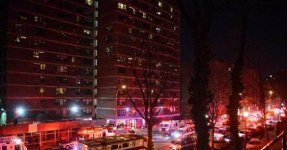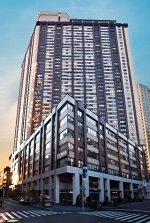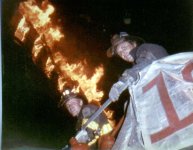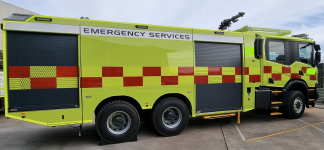- Joined
- Apr 25, 2023
- Messages
- 34
Good evening Team,
I had a question for all you FDNY Guru's out there. This is in relation to long duration SCBA. I was wondering what you use for long duration SCBA operations. i would imagine a standard BA cylinder would not suffice for highrise operations and i wondered what you use in that space. Do you use twin cylinders? or do you use COBA (Compressed Oxygen Breathing Apparatus - rebreather) sets?
For underground operations over in Aus, we use rebreathers which have a 4 hour wearing duration. This is standard and required by our regulations for any underground mine. They are expensive $16,000 AUD per unit and require significant maintenance (pure oxygen and soda lime along with a cooling gel canister to cool the breathing loop).
Our standard SCBA have a compressed air cylinder of 6.8L (hydro capacity) which give us about 30-40 mins of air for working duration (plus 10min safety margin at whistle).
Its very very rare that we would use a double yolk twin 6.8L Cylinders its either 1 cylinder or a rebreather. i have heard of old school sets where departments could use twin 9L cylinders but i think this was phased out once rebreathers became prominent.
Our 6.8L cylinders are carbon fiber wrapped aluminum. They replaced our steel cylinders about 25 years ago and are about 33% lighter than steel. in the last 5 years we have now seen the Nano tech cylinders which are lighter again roughly 47% lighter than steel cylinders.
I was interested to hear what is used in the big apple.
Hope all is well up there team.
Cheers
Jess
I had a question for all you FDNY Guru's out there. This is in relation to long duration SCBA. I was wondering what you use for long duration SCBA operations. i would imagine a standard BA cylinder would not suffice for highrise operations and i wondered what you use in that space. Do you use twin cylinders? or do you use COBA (Compressed Oxygen Breathing Apparatus - rebreather) sets?
For underground operations over in Aus, we use rebreathers which have a 4 hour wearing duration. This is standard and required by our regulations for any underground mine. They are expensive $16,000 AUD per unit and require significant maintenance (pure oxygen and soda lime along with a cooling gel canister to cool the breathing loop).
Our standard SCBA have a compressed air cylinder of 6.8L (hydro capacity) which give us about 30-40 mins of air for working duration (plus 10min safety margin at whistle).
Its very very rare that we would use a double yolk twin 6.8L Cylinders its either 1 cylinder or a rebreather. i have heard of old school sets where departments could use twin 9L cylinders but i think this was phased out once rebreathers became prominent.
Our 6.8L cylinders are carbon fiber wrapped aluminum. They replaced our steel cylinders about 25 years ago and are about 33% lighter than steel. in the last 5 years we have now seen the Nano tech cylinders which are lighter again roughly 47% lighter than steel cylinders.
I was interested to hear what is used in the big apple.
Hope all is well up there team.
Cheers
Jess






